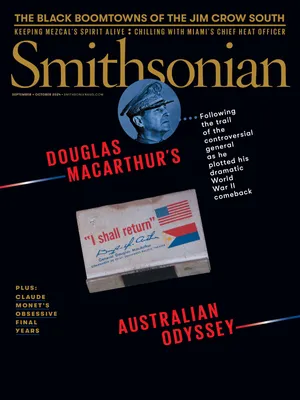What’s the History of Hawaiian Grass Skirts? And More Questions From Our Readers
You’ve got questions. We’ve got experts
:focal(761x573:762x574)/https://tf-cmsv2-smithsonianmag-media.s3.amazonaws.com/filer_public/a5/85/a585c7e1-447d-4e55-841b-42e255dd2c4f/ask.jpg)
Did Hawaiian dancers traditionally wear grass skirts? Christopher Maurer | Lacey, Washington
Pacific Islanders did wear plant-based clothing for ritual and dance—the Māori of New Zealand, Samoans, Gilbert Islanders, Fijians and Tongans, to name a few. In Hawai‘i, traditional hula dancers made pau (skirts) out of leaves of the ti plant (Cordyline fruticosa). In the late 1800s, Hawaiians began touring on the vaudeville circuit throughout the United States. By around 1915, Hawaiian music was outselling all other recorded music in the U.S., and Hawaiian performers were in high demand at venues ranging from small-town theaters to Broadway stages. The musicians and dancers, generally Native Hawaiians, could not find ti leaf, so they improvised with available resources. From that point on, the grass skirt became a stereotypical representation of Hawai‘i, the Pacific, and the hypersexualization of Pacific Islander women by sailors and the media. —Kālewa Correa, curator of Hawai‘i and the Pacific, Smithsonian Asian Pacific American Center
Why do birds and humans have varied songs while most other animals don’t sing? Suzanne Epstein | Bethesda, Maryland
Like other types of animals, birds have a larynx, a voice box at the top of the throat that vibrates to enable them to vocalize. What’s unique to birds is a structure called a syrinx at the lower end of the trachea. The syrinx of birds varies considerably among species. It’s most complex in the group of birds known as songbirds. Some birds do not have a syrinx. (For instance, New World vultures don’t, and they don’t sing.) For birds that do have them, syrinxes differ greatly among species and even between sexes of the same species, which is why the male often has a more complex song than the female. Birdsong is also influenced by other factors, like the length and diameter of the trachea and the shape and size of the bill. Humans are able to sing for a different reason: We lack a set of vocal membranes that other primates have. Scientists aren’t entirely sure why humans evolved without those membranes, but being free of them gives us more vocal stability. We’re able to sustain melodious tones and make the range of phonetic sounds we need for complex speech. Although we evolved our musical abilities in a completely different way, the fact that birds can sing no doubt adds to our affinity with them. —Sara Hallager, curator of birds, Smithsonian’s National Zoo and Conservation Biology Institute
What was the least peaceful transfer of power in U.S. history? Phillip Schwartz | Park Forest, Illinois
That’s easy! The least peaceful transfer of power took place in 1861. There were plots to assassinate Abraham Lincoln and disrupt the electoral count, and several states chose to secede rather than accept the result. After that, most of the violent transfers of power took place at the state level. In Alabama in 1874, for instance, a white militia waged violence against Black voters on election day and then refused to count their votes, declaring the other candidate victorious. The same year in Louisiana, a mob overthrew Vermont-born Republican Governor William Pitt Kellogg. Such incidents throughout the South led to murders and rival governments operating at the same time. —Jon Grinspan, curator of military and political history, National Museum of American History
